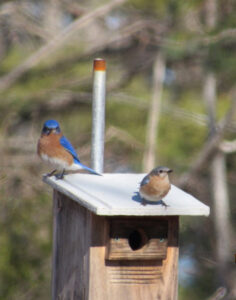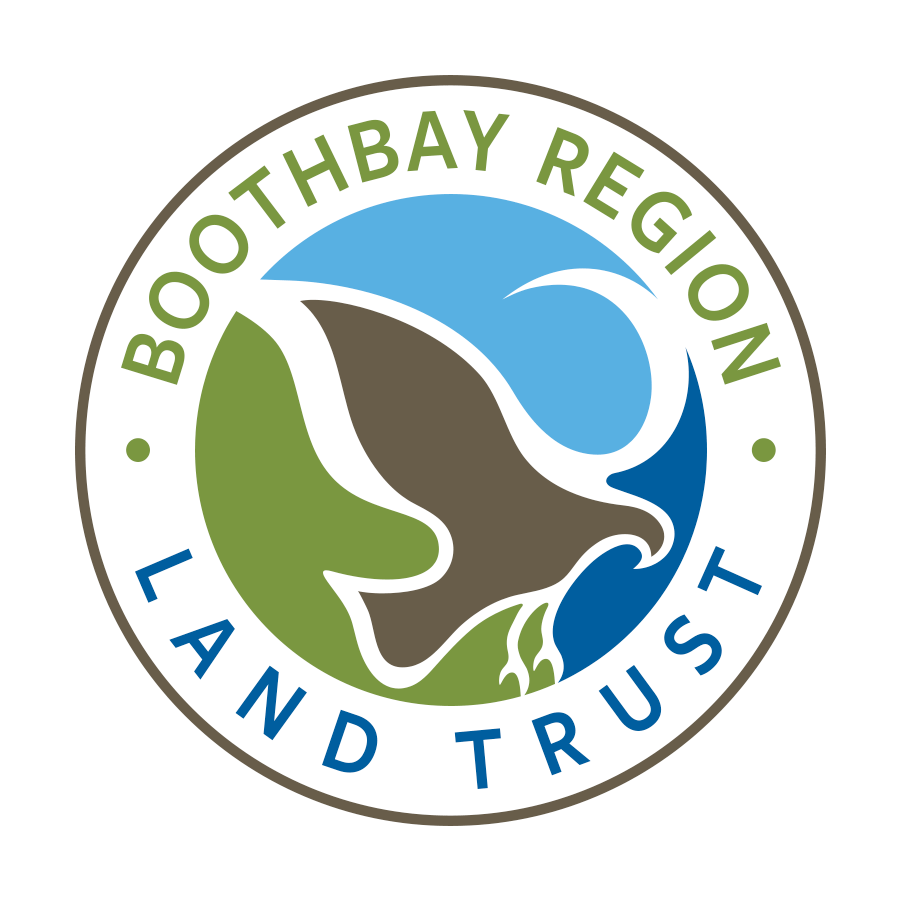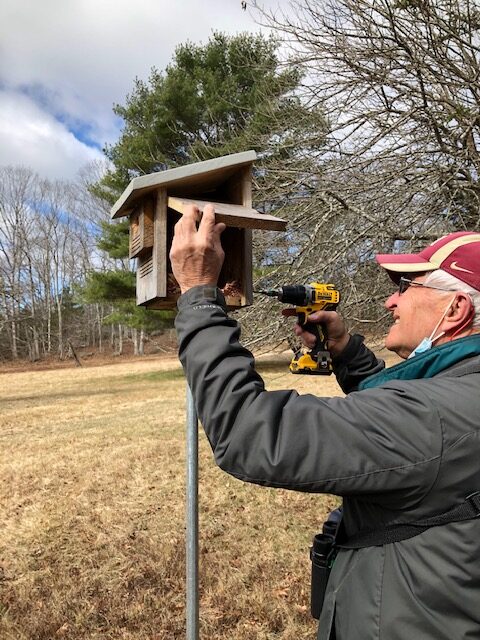
A bluebird pair guards a nest box of interest at Oak Point Farm.
Spring is here and that means that birds are returning to the Boothbay region and some are beginning to pair up and build nests. Mating pairs are in search of the perfect place to raise their broods, and each species has its own particular housing requirements. For cavity nesters such as wood ducks, kestrels and bluebirds, that means finding just the right hollow that is protected, adequately deep, and ideally suited for allowing parents safe passage but limiting access to potential predators or other dangers. At Boothbay Region Land Trust, a few dedicated volunteers led by long-time birder, Stan Wakefield, have been hard at work making sure that a variety of homes are available to these feathered families on our preserves.
Last spring, with the support of the land trust, Wakefield built and installed a number of bird nesting boxes at three preserves: Oak Point Farm, Lobster Cove Meadow, and Singing Meadows. These boxes included eleven small boxes suited to species such as the Eastern bluebird or the black-capped chickadee, one box dedicated wood ducks, and one medium-sized nesting box that would support kestrels, woodpeckers, or small owls. Throughout the season, Wakefield and fellow volunteer, Michael Warren, faithfully monitored each of the boxes weekly throughout the nesting season from April through September. They tracked nest building, egg laying, and nestling progress with photos and data collection. The information gathered provided a wonderful glimpse into the lifecycles of some of our local birds, while also contributing to NestWatch, a citizen-science monitoring effort through the Cornell Lab of Ornithology. Overall in the inaugural season, 48+ new birds from six different species were documented on the land trust preserves through this effort. This of course captured only a small sample of the numerous birds that utilize BRLT properties for nesting each year, many of which make their homes in the plentiful natural habitats available on the preserves.
This season, with Wakefield’s oversight, the land trust continues to expand the monitoring effort by adding an additional preserve with bird boxes at Penny Lake, as well as increasing the number of boxes at other locations. In total, there are currently 18 bird boxes being monitored this year: 7 at Oak Point Farm; 2 at Lobster Cove Meadow; 6 at Singing Meadows; and 3 at Penny Lake. Fifteen of these are for small birds located at all four preserves, one is for wood ducks at Oak Point Farm, and 2 are for medium-size birds like kestrels at Oak Point Farm and Singing Meadows. The box locations have been carefully selected to ensure appropriate habitat for the intended birds, and are properly spaced for successful rearing of chicks.
With the additional boxes to track, more volunteers have joined the monitoring effort. You can keep track of all the nesting progress in these boxes throughout the season, with insights into bird behavior and plentiful pictures of baby bids, on the land trust’s birding blog, The Bird Word. The blog is also a great site to visit prior to heading out for a walk at the preserves to get updates on active nesting before your visit. Observers to the preserves can view the boxes from the trails (please refrain from closely approaching or disturbing them). Patient visitors are likely to enjoy sights such as parents guarding boxes, or delivering food to newly hatched chicks. Binoculars are helpful in getting the best views, and you’ll probably catch plenty of other feathered flyers between boxes. Happy viewing!




